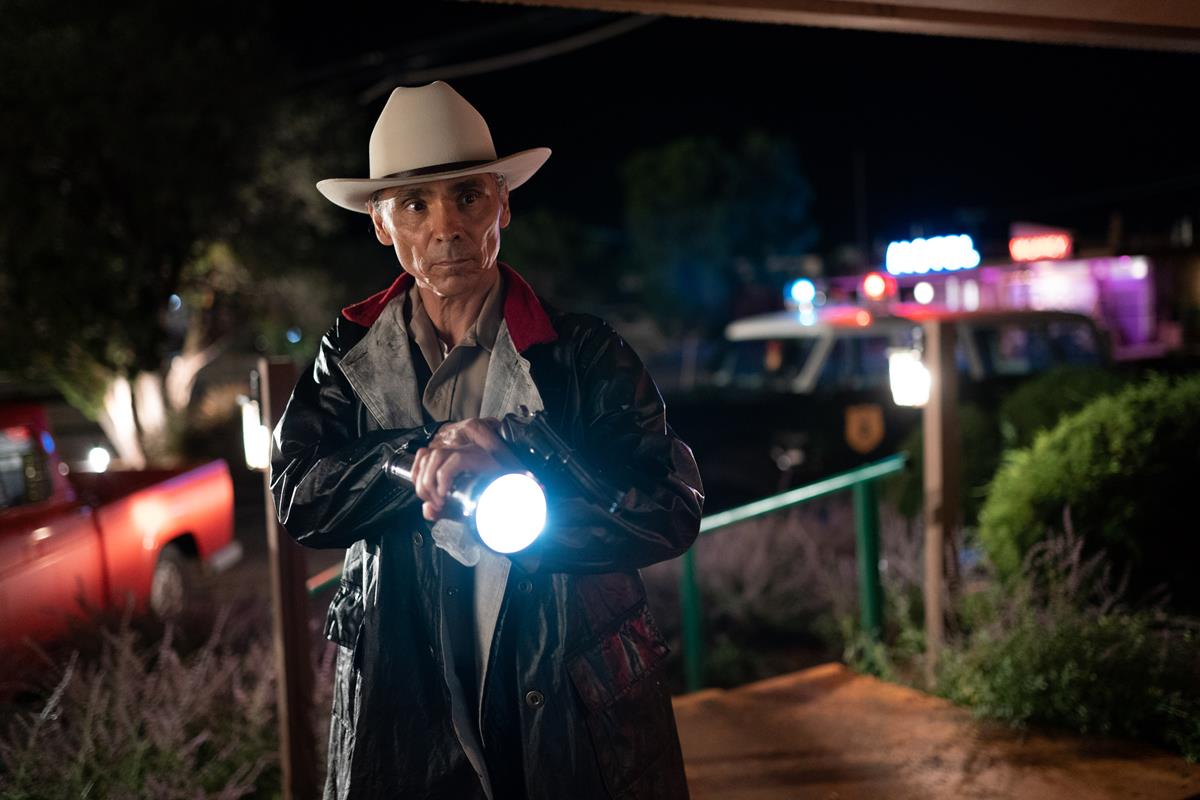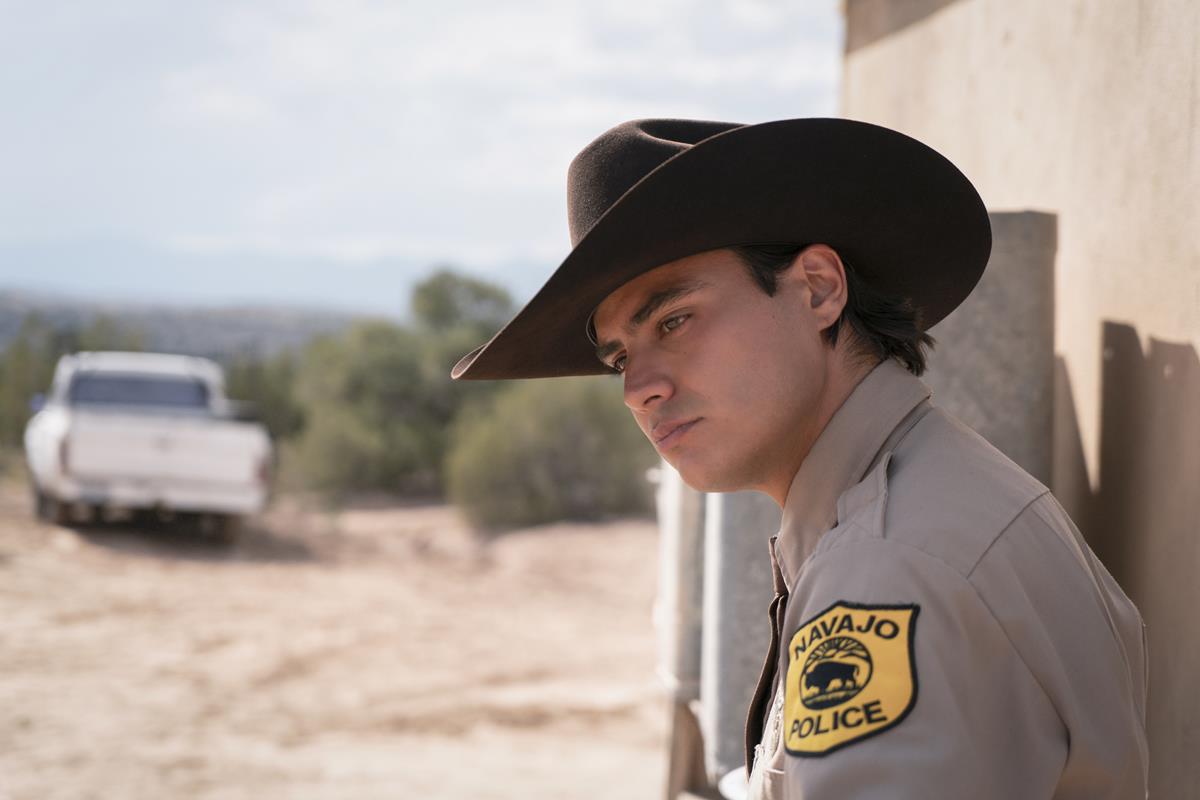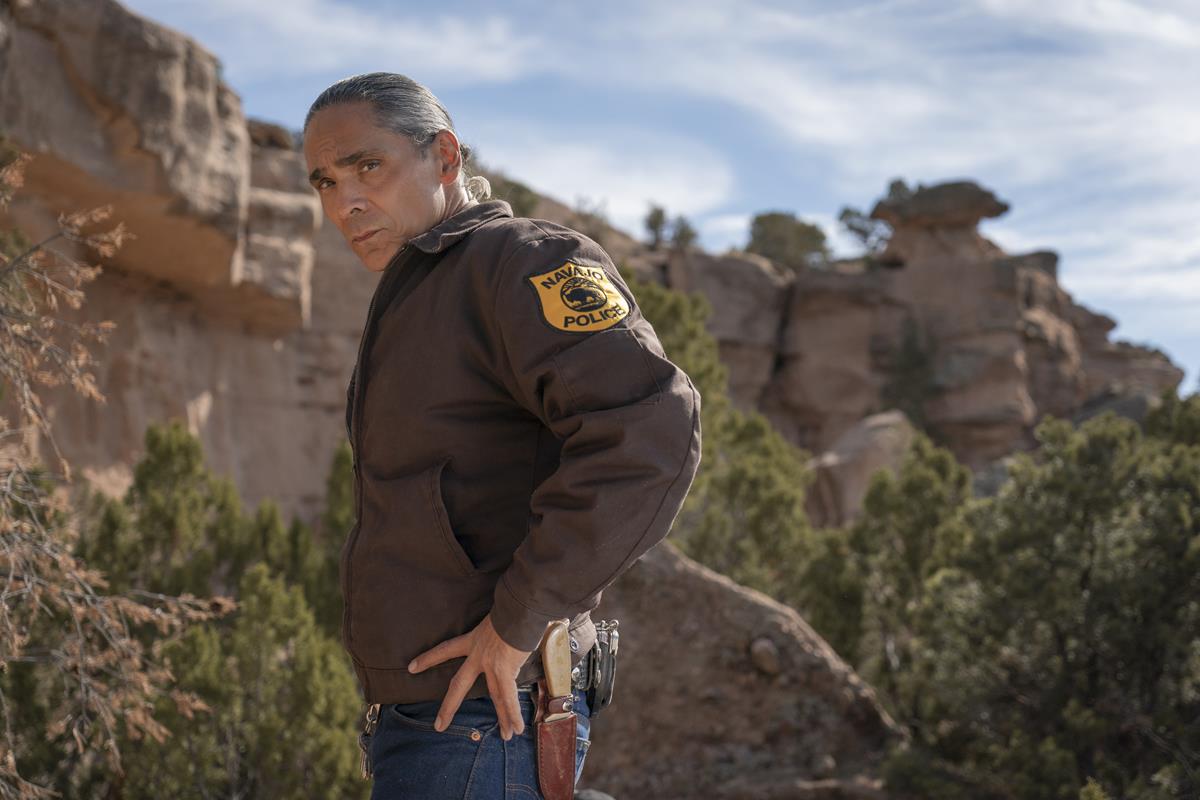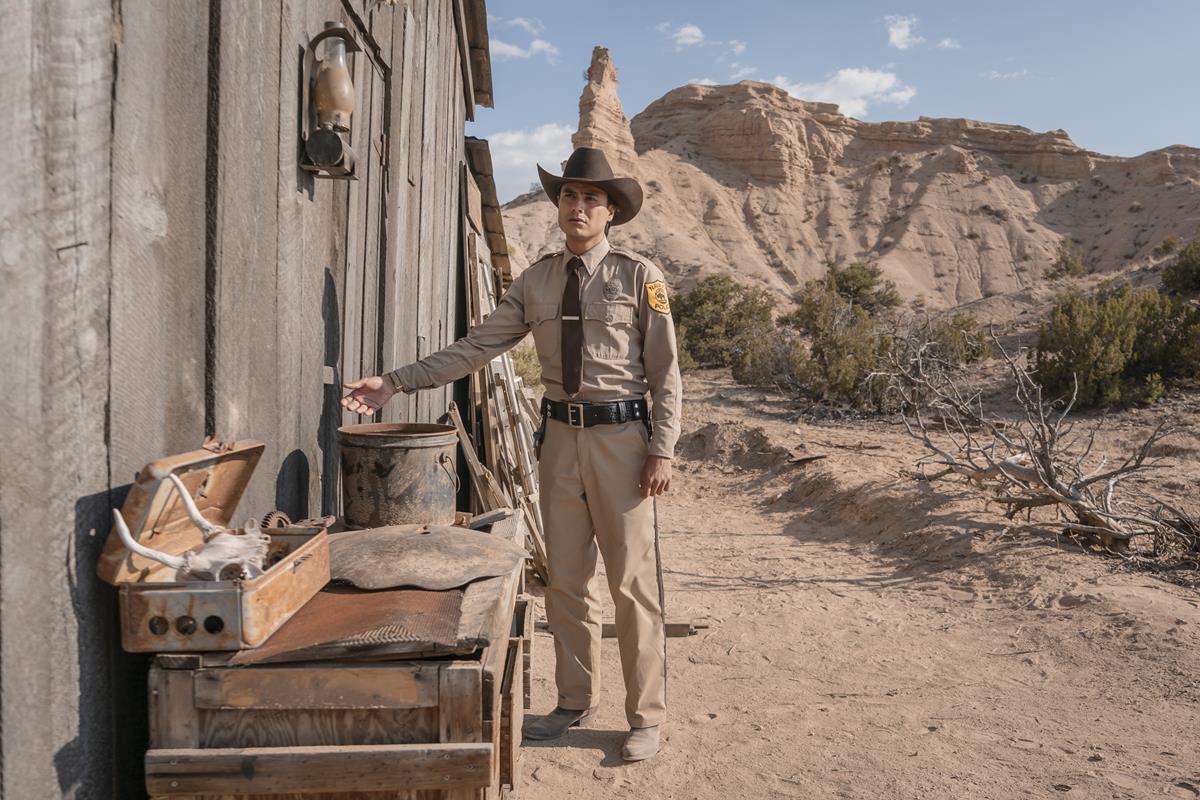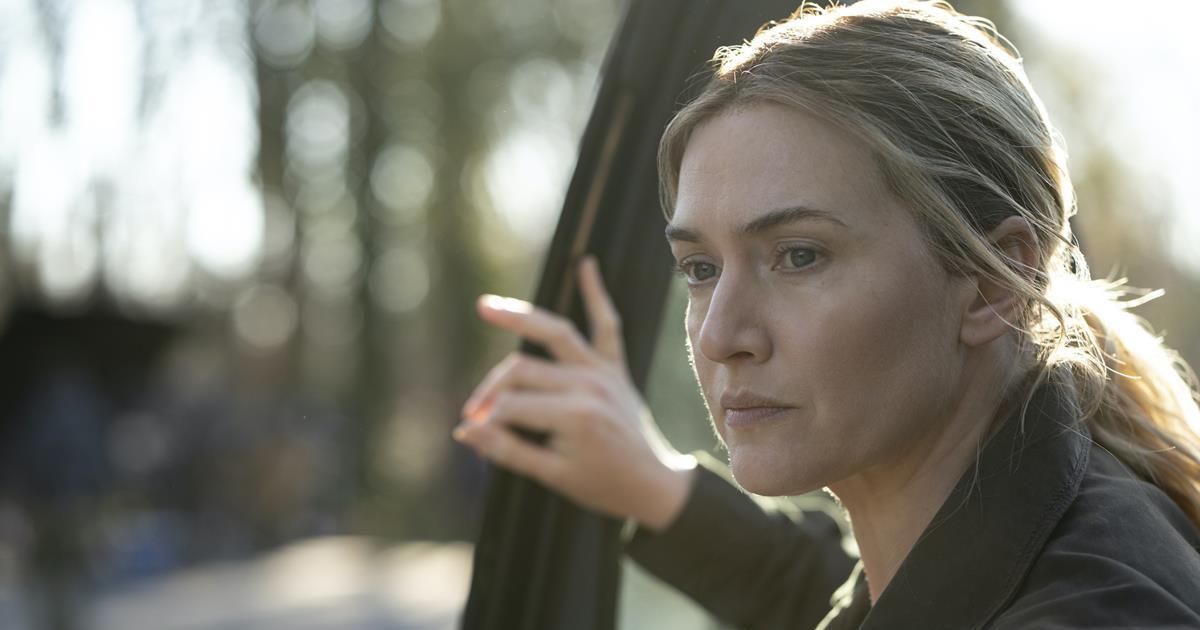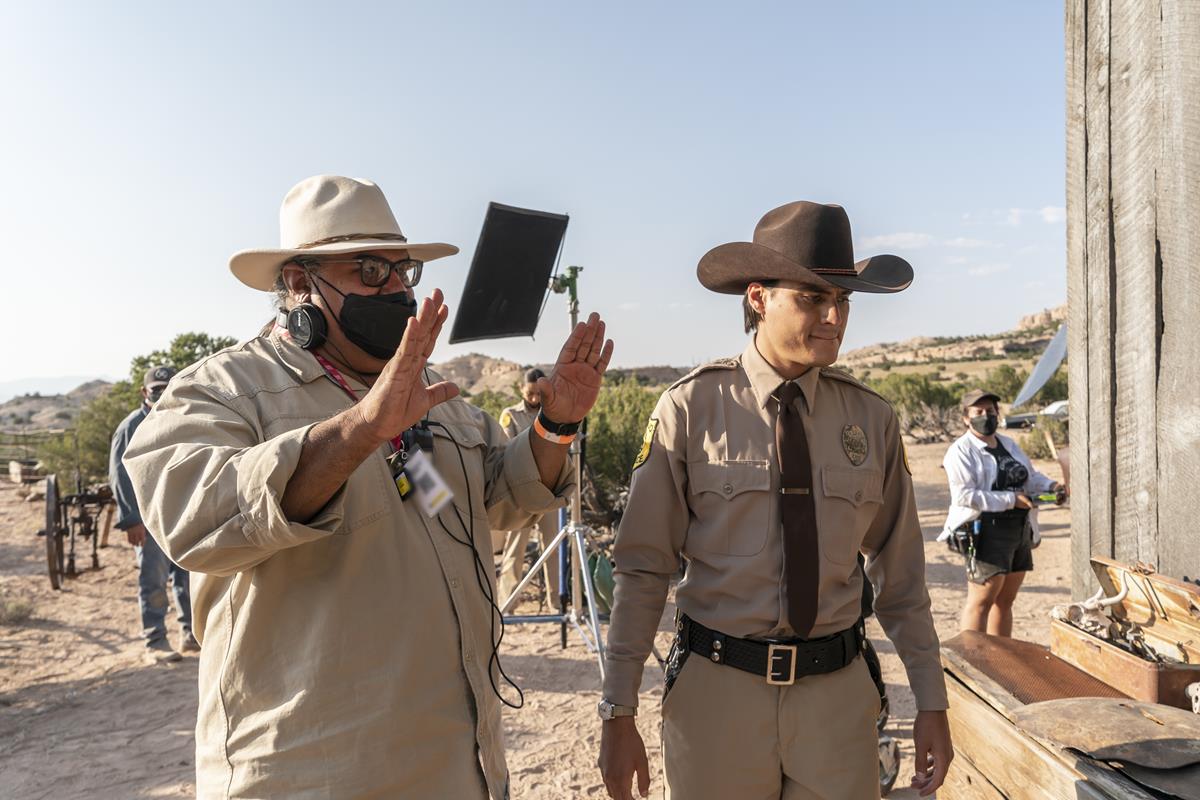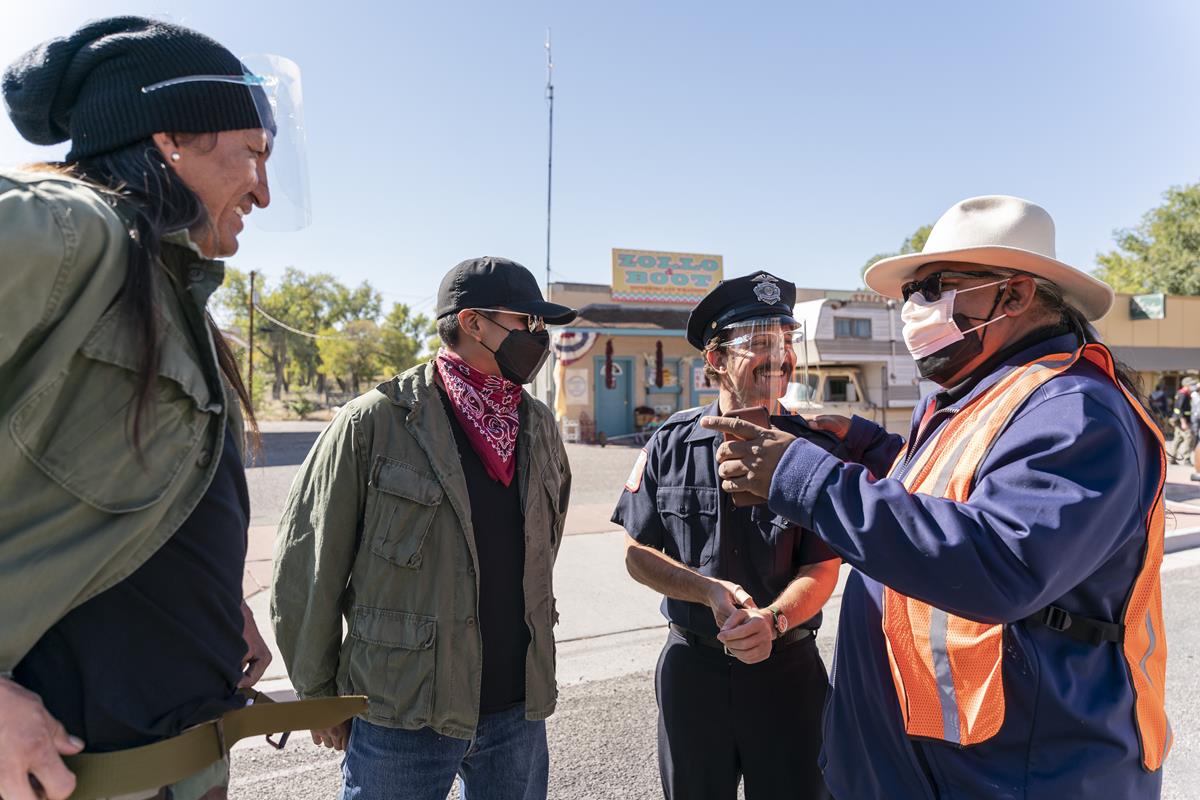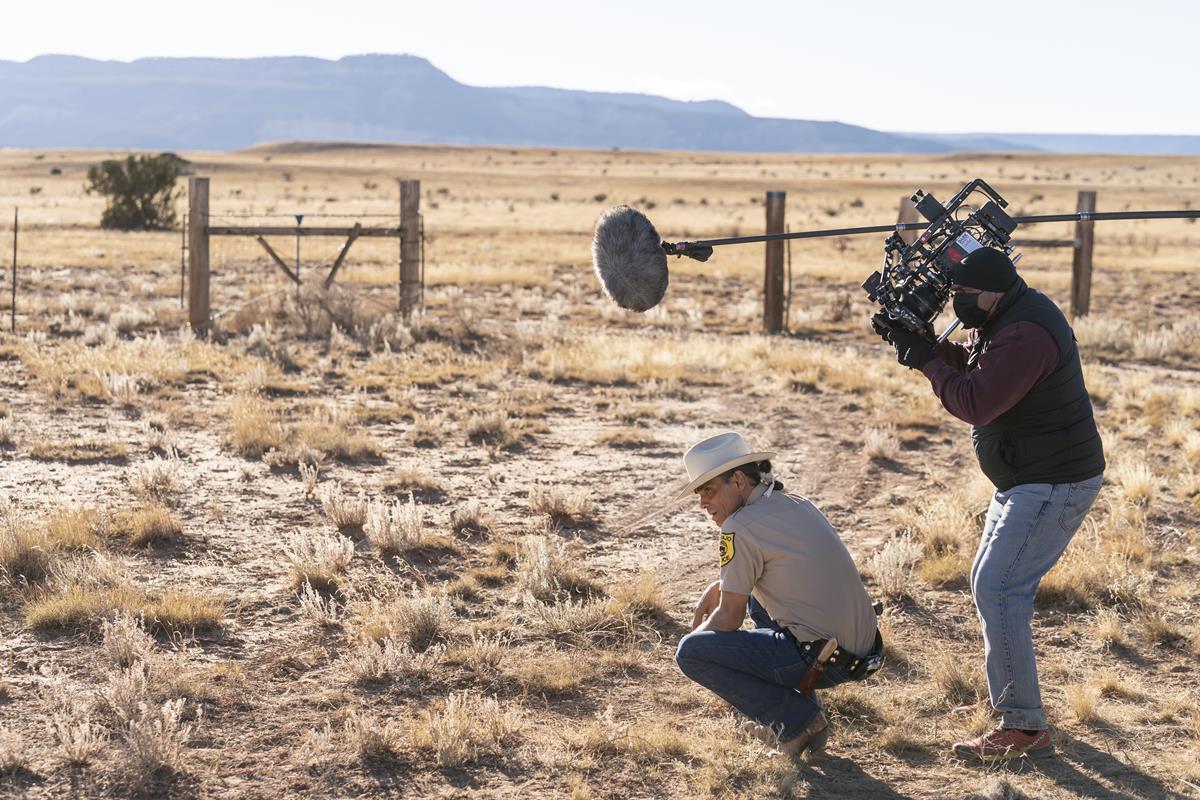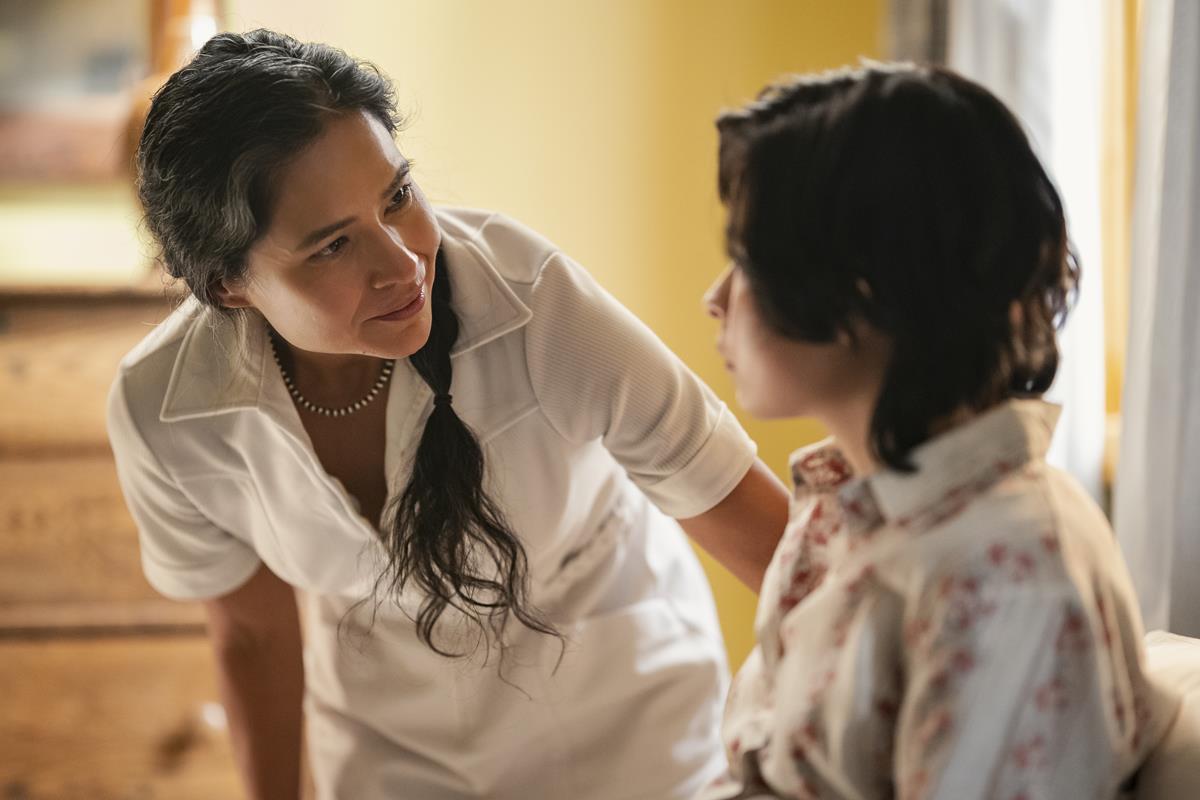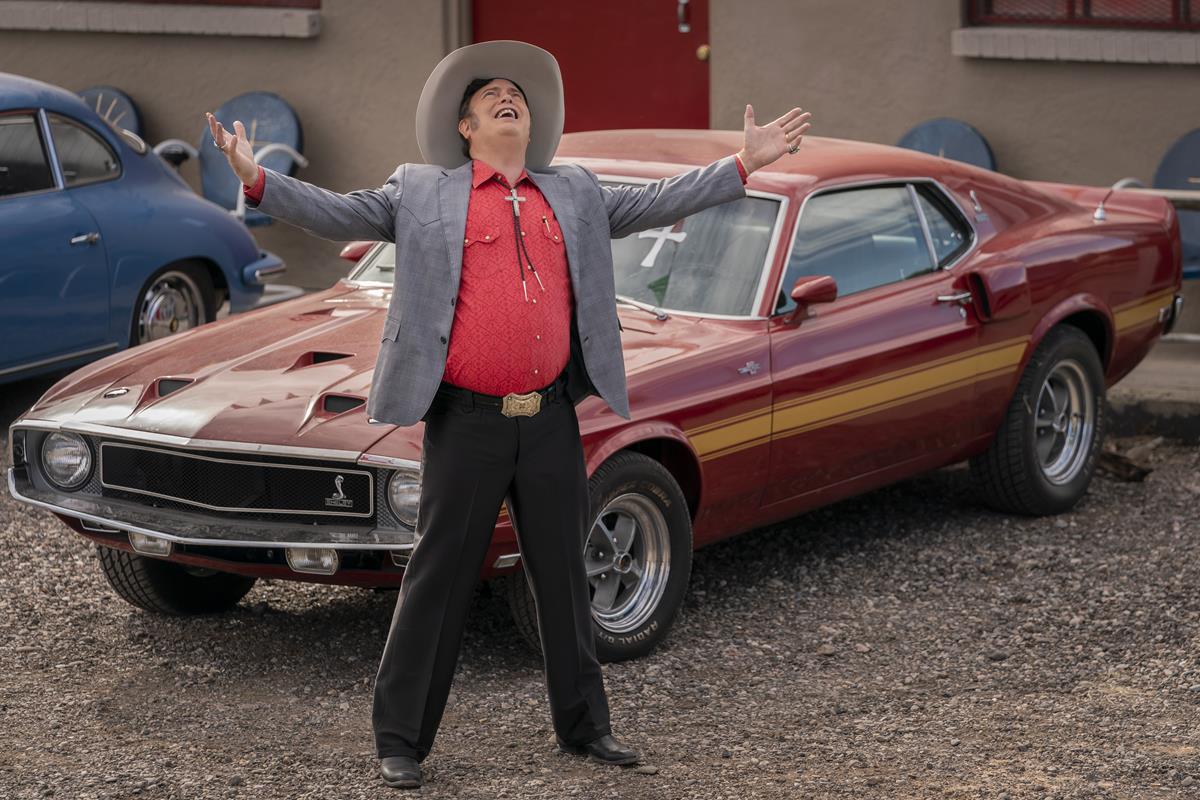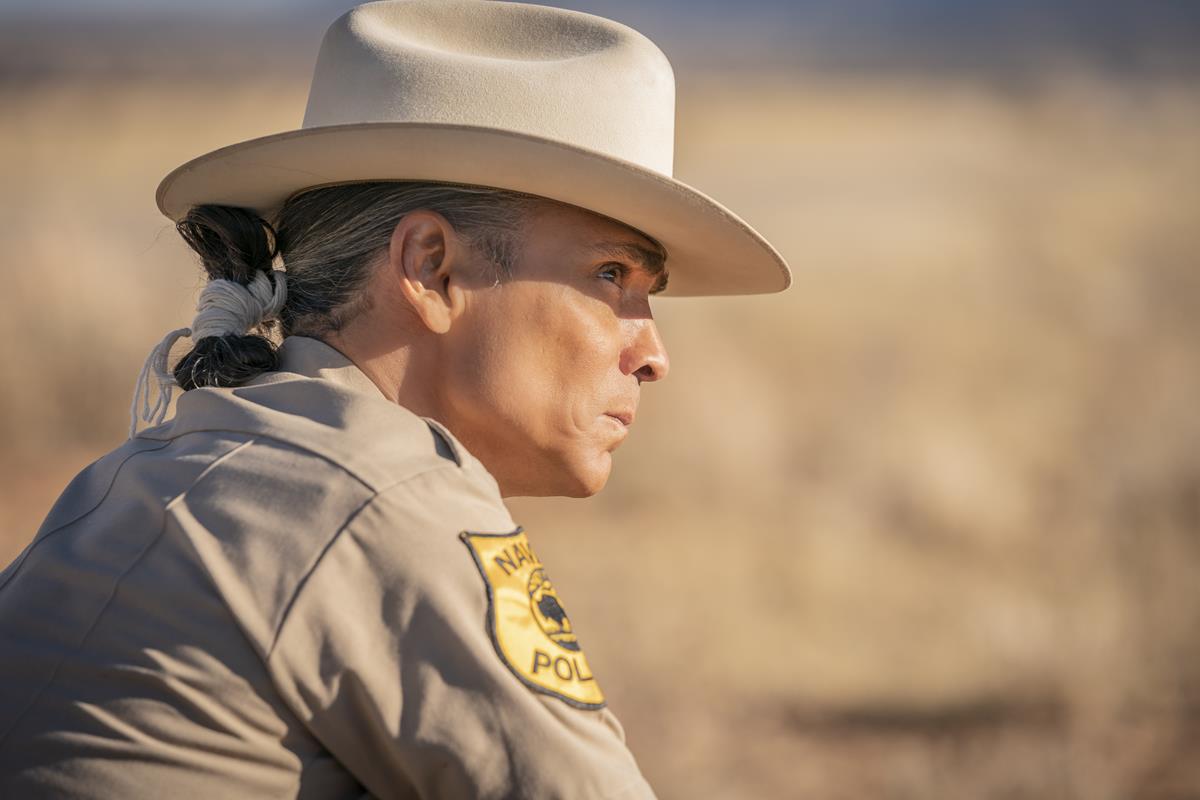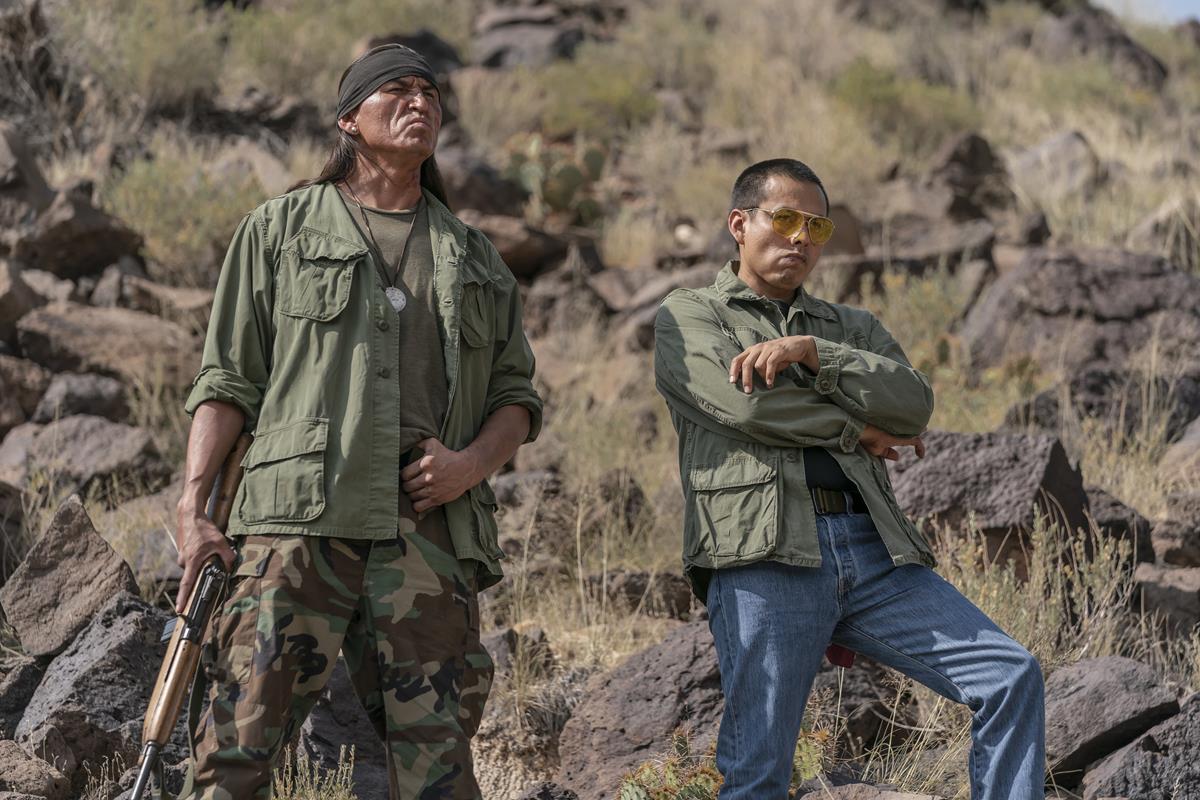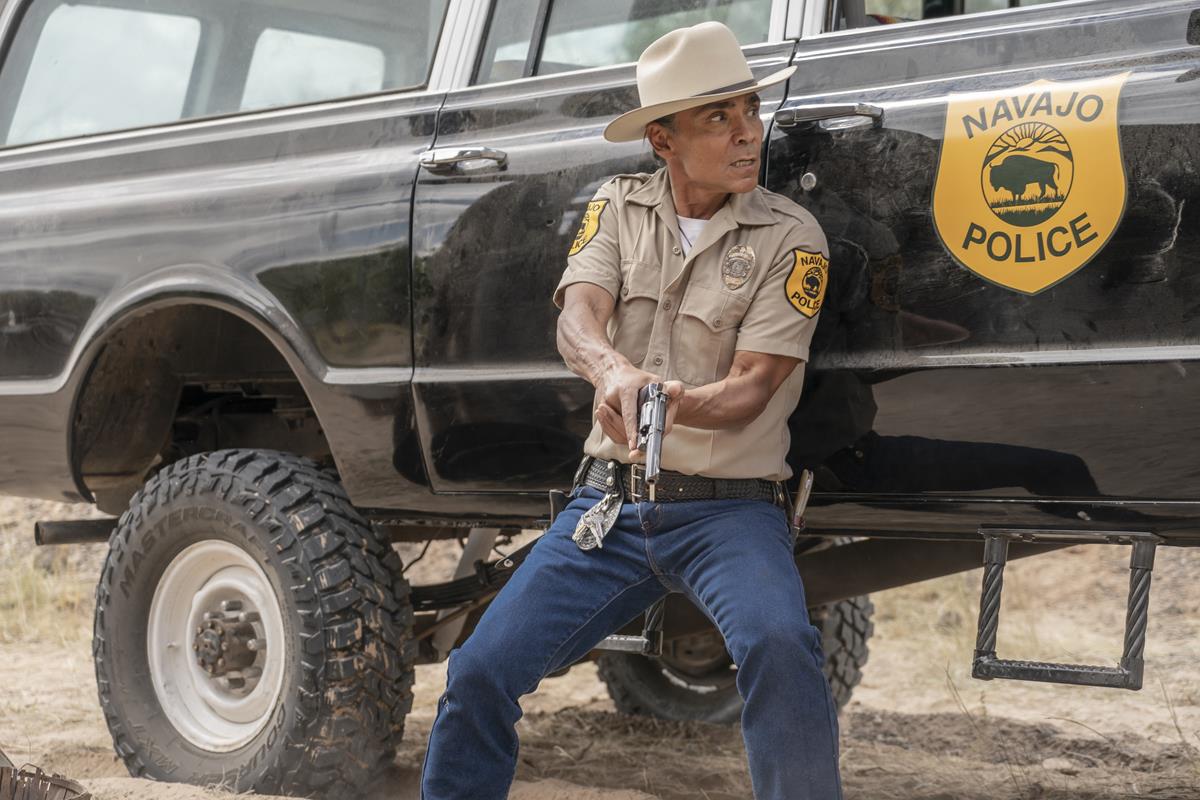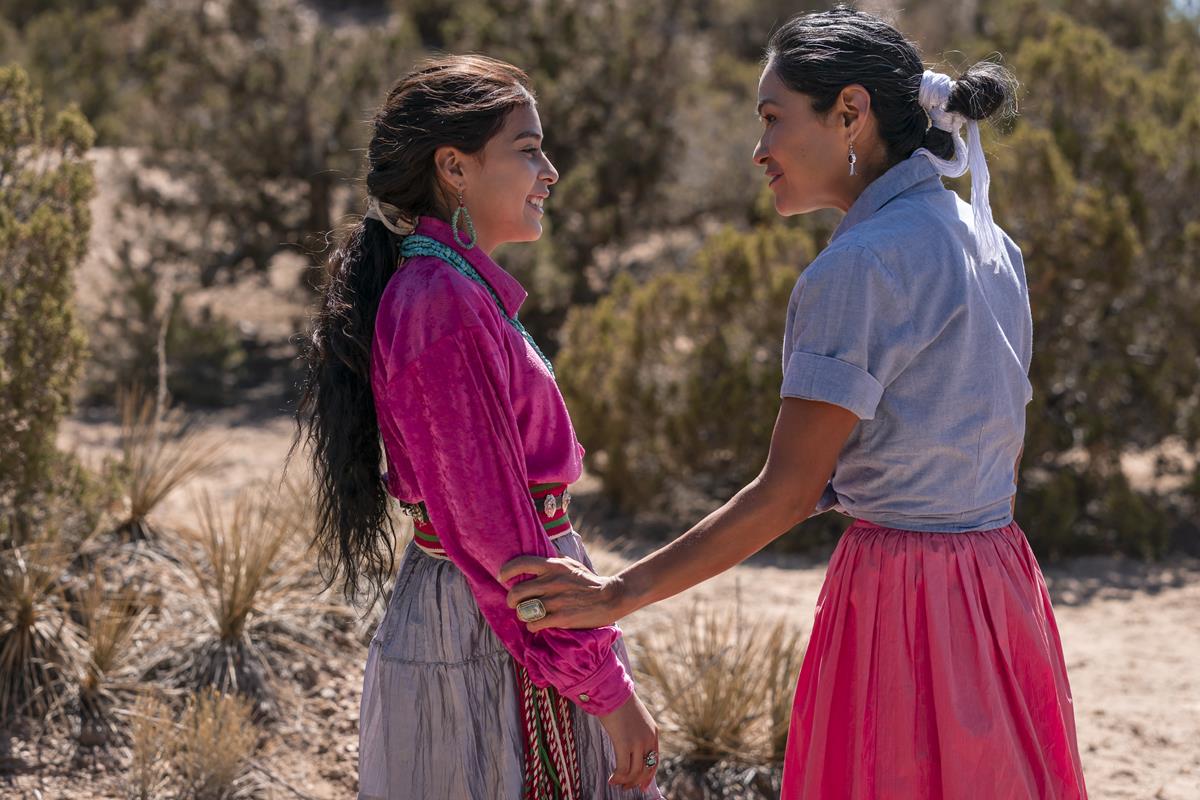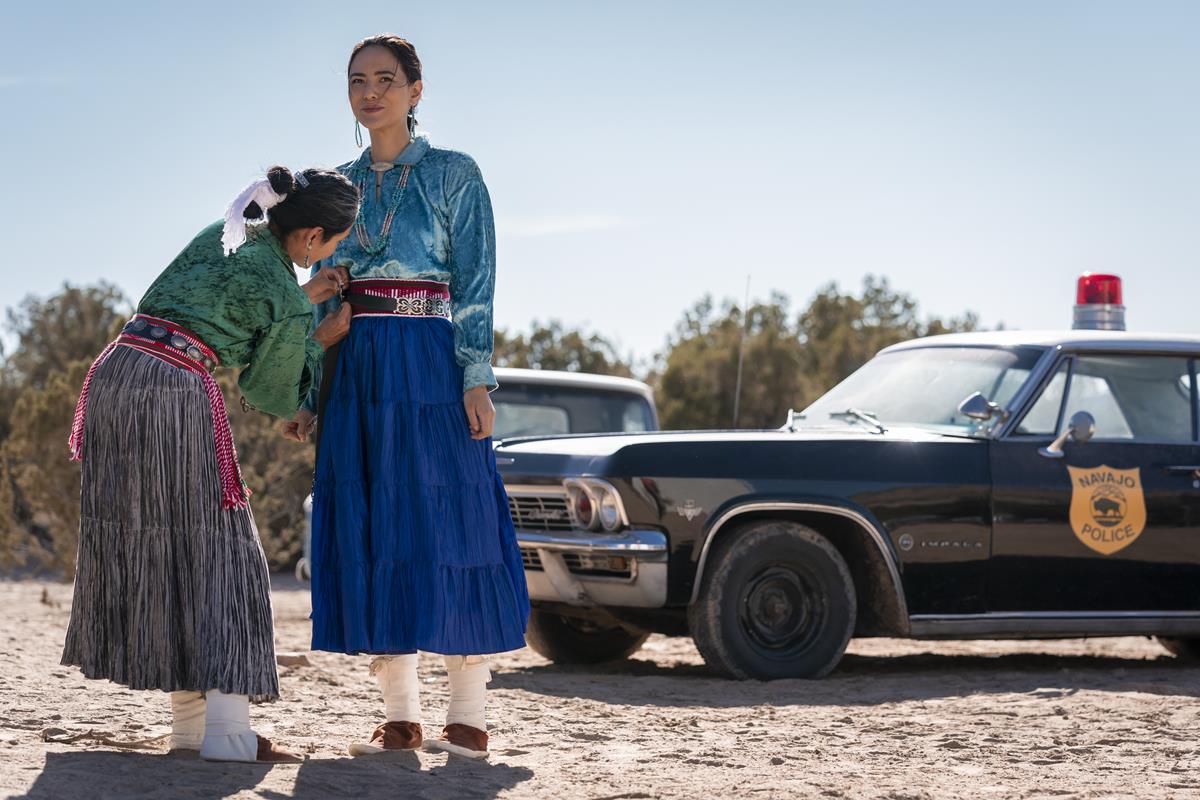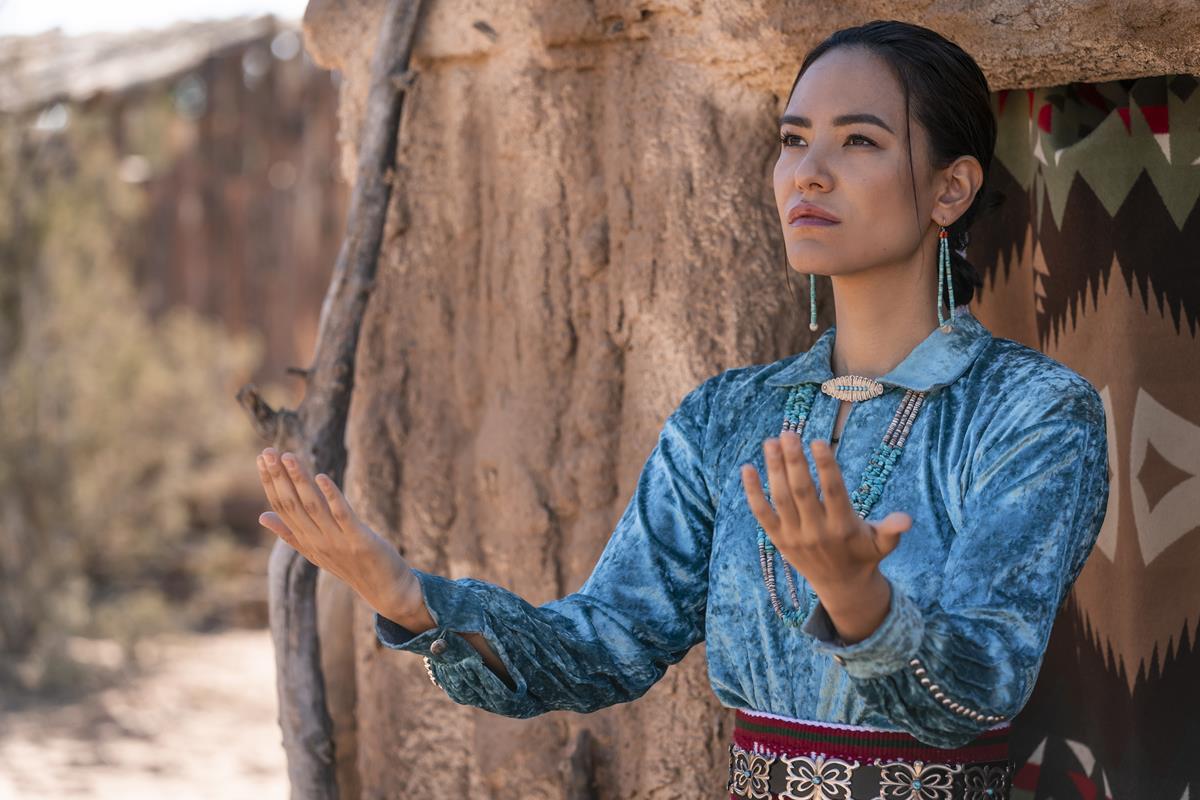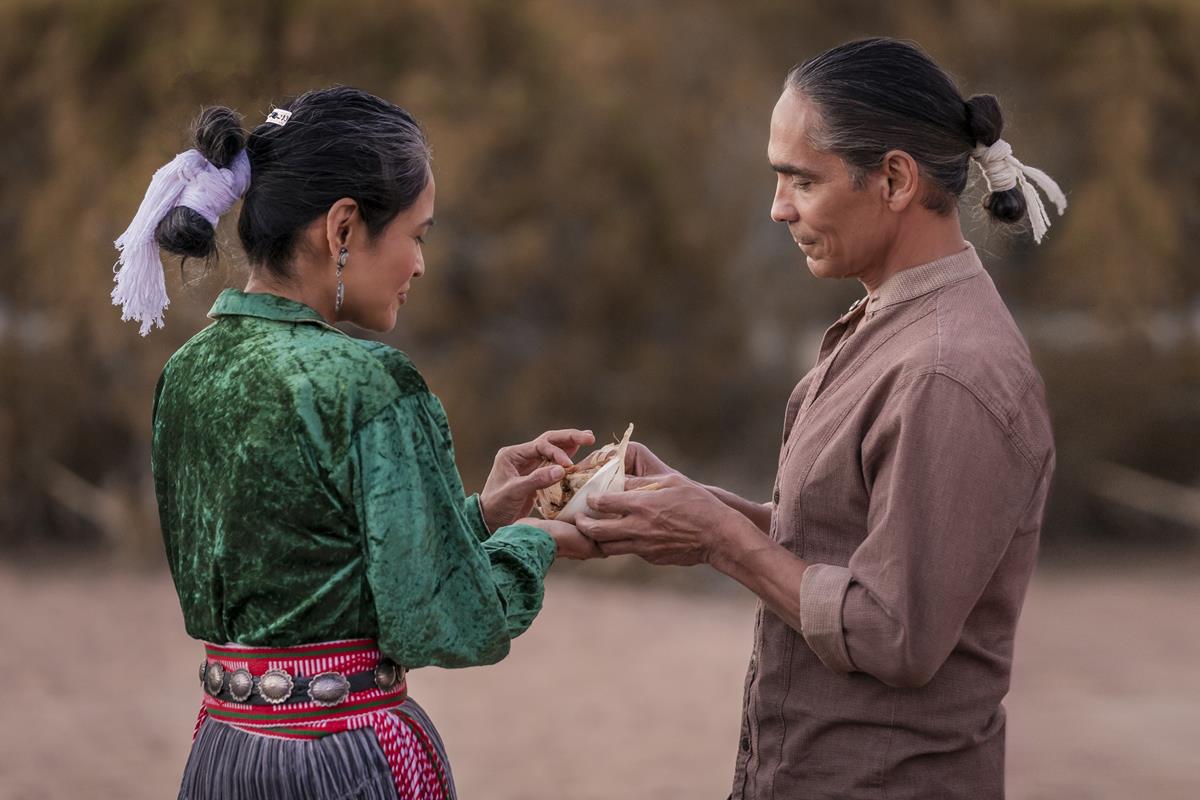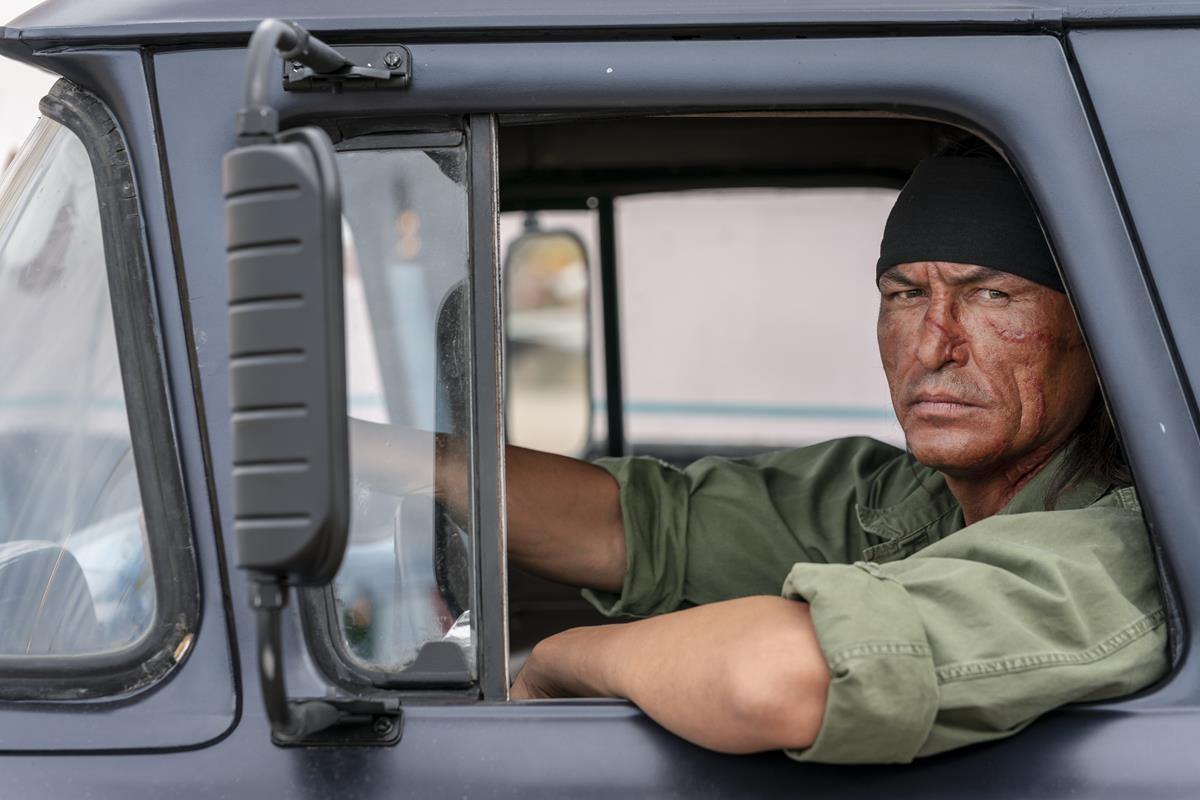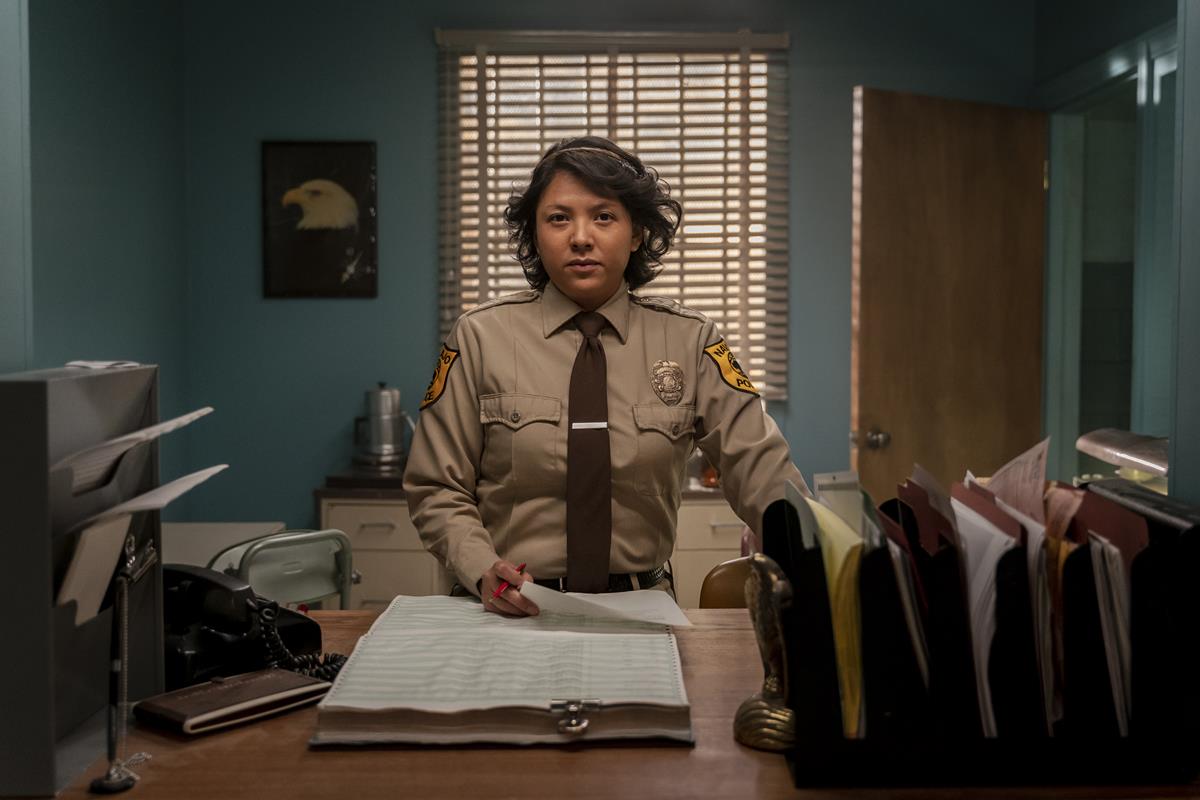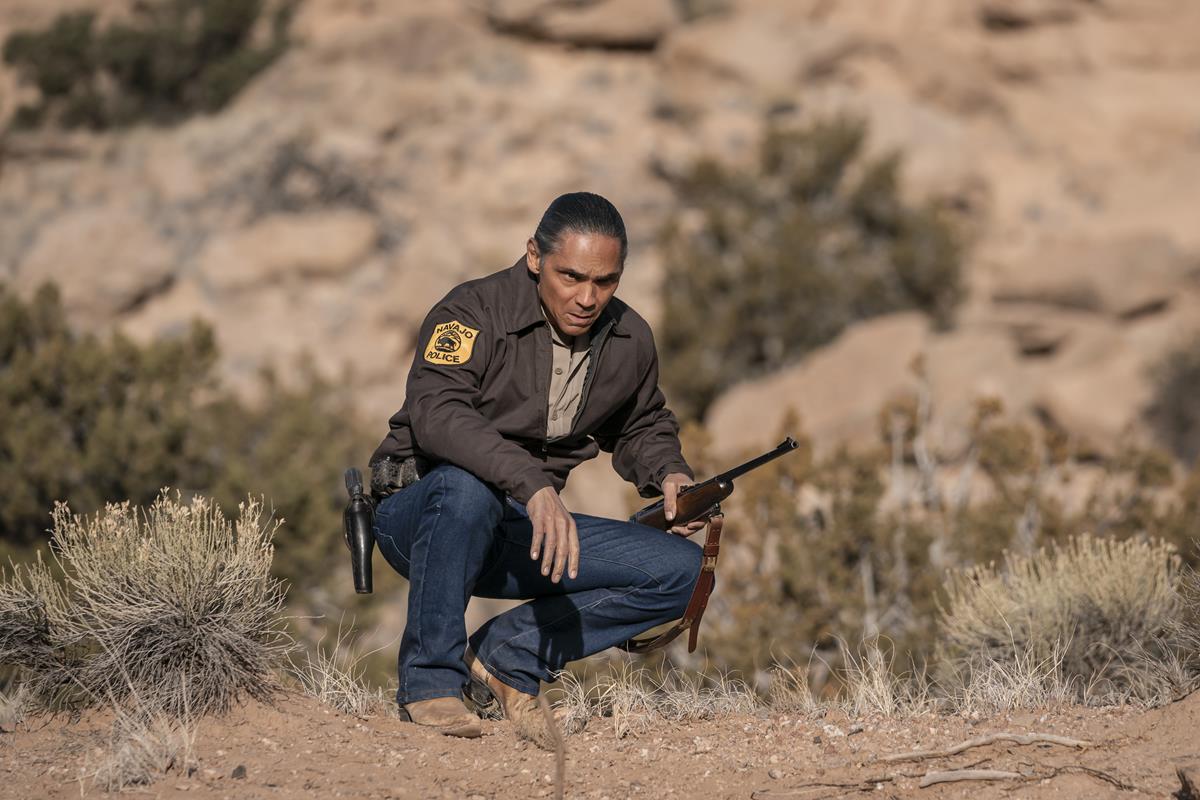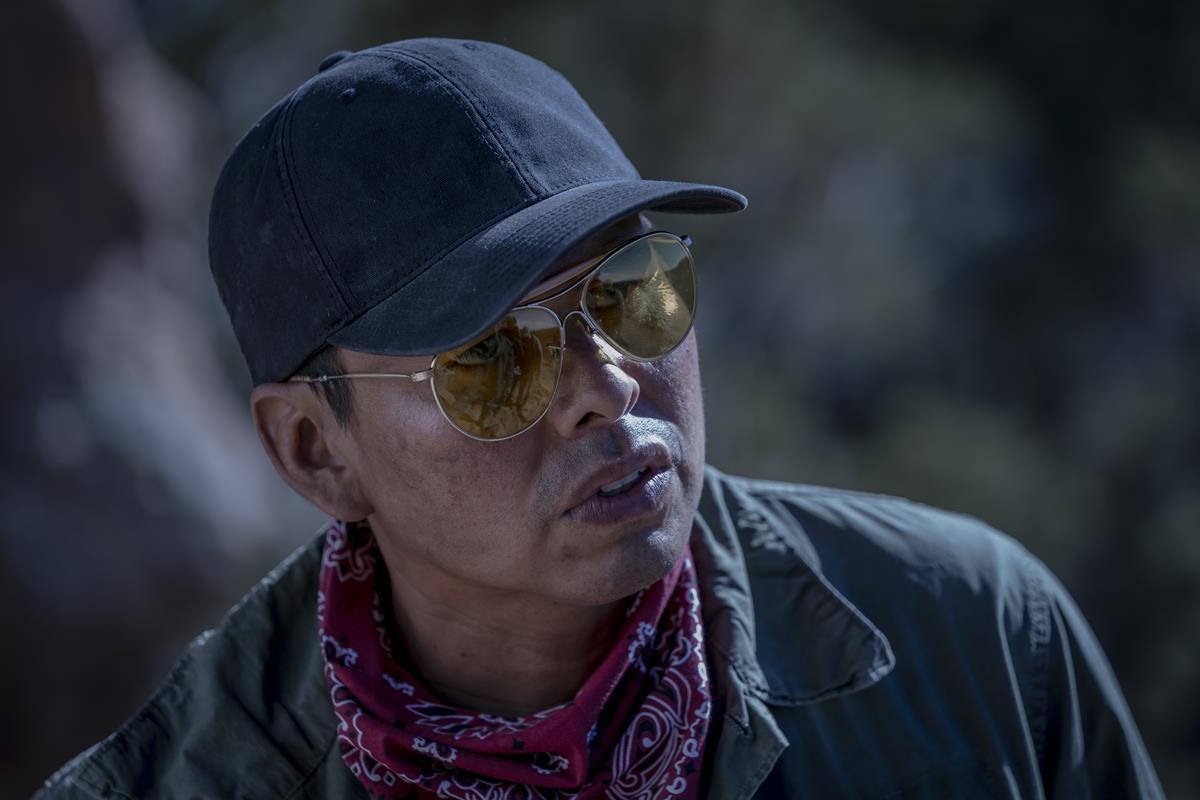
AMC’s “Dark Winds,” based on the book series by Tony Hillerman and executive produced by Robert Redford and George R. R. Martin, is part of a mini-boom of Native American content. Cr: AMC
The entertainment industry’s own flavor of reparations to the Native American have been meager, to say the least, but now AMC’s Dark Winds is providing succor and a superb detective series all at the same time. The episodic series, which is now available on AMC and AMC+ with the first episode available for free in certain territories on the AMC YouTube channel, has a rare 100% rating among critics on Rotten Tomatoes and has deservedly been greenlit for season two while season one is still airing.
The Hollywood Reporter’s Rebecca Keegan even recognizes Dark Winds as part of a mini-boom of Native American content, alongside “…season two of Reservation Dogs, the Indigenous teen comedy Sterlin Harjo and Taika Waititi created for FX on Hulu, and season two of the Peacock sitcom Rutherford Falls, co-created by Navajo showrunner Sierra Teller Ornelas with Ed Helms and Mike Schur.”
To underscore the zeitgeist, this year’s Sundance Film Festival programmed 15 projects by Indigenous artists.
Dark Winds has deeper links with Sundance and the Sundance Kid himself as Robert Redford is one of the Executive Producers — he bought the rights to the original Tony Hillerman books back in the ‘80s (Hillerman died in 2008). Hillerman had tried to sell his books to Hollywood as they reached bestseller status. He ended up selling the rights to the Leaphorn character to an independent producer who never made a film. Fortunately, as the studio had never actually made anything, the rights reverted to Hillerman, who promptly sold them to Redford.
But even Hillerman’s initial play for a publishing deal served up problems with his core idea, as the author told The Los Angeles Times in 2002. When he pitched his first Joe Leaphorn book to an agent, “She told me the only chance of selling it was to get rid of all the Indian stuff — it slowed down the book. I told her that was the reason I was writing the book.”
Many years later Dark Winds had added Games of Thrones creator George R. R. Martin to the executive producer roster — he was an old friend of the author. It was the Redford and Martin dual approach that finally got the show over the line and produced and made, mostly by indigenous talent.
“George and I felt strongly about this point,” Redford noted of the project’s reliance on Indigenous talent. “You want to honor the culture by getting it right, and who better to do that?”
NOW STREAMING — BEHIND THE SCENES OF FAN-FAVORITE SERIES:
As the streaming wars rage on, consumers continue to be the clear winners with an abundance of series ripe for binging. See how your favorite episodics and limited series were brought to the screen with these hand-picked articles plucked from the NAB Amplify archives:
- “Severance:” Now, About Solving the Work/Life Balance…
- Entering “The Gilded Age”
- Class Is Definitely Not In Session: The Horror Delights of “All of Us Are Dead”
- “The Dropout” Is a Slow-Motion Car Crash (and We Can’t Look Away)
- The (Unavoidable) Universal Appeal of “Squid Game” Is By Design
As a master weaver of plots himself, Martin was only too keen to support the filming of the books. As he pointed out, at their heart you still had classic whodunits. “Someone is found dead, and the detectives have to figure out who did it. But the biggest thing really was the setting.
“It’s another world, and Tony brought you into that world and into the Navajo culture and the culture of the other Indian tribes in the area.”
READ MORE: The 30-Year Journey to AMC’s Groundbreaking Native American Drama ‘Dark Winds’ (The Hollywood Reporter)
AV Club reviewer Saloni Gajjar also caught the show’s caliber and places it among the very best of recent detective shows. “Zahn McClarnon plays Joe Leaphorn, a quiet and troubled police officer who’s burdened with solving a hometown tragedy. Similar to Mare of Easttown and just about every Nordic noir show, this one centers on Leaphorn navigating personal and professional crises.”
READ MORE: Dark Winds is a slow-burning, Navajo Nation-set noir (AV Club)
Tatiana Hullender at Screen Rant lays out the film’s synopsis. “Set in 1971 on a remote outpost of the Navajo Nation near Monument Valley, Dark Winds follows Lieutenant Joe Leaphorn of the Tribal Police as he is besieged by a series of seemingly unrelated crimes. The closer he digs to the truth, the more he exposes the wounds of his past. He is joined on this journey by his new deputy, Jim Chee. Chee, too, has old scores to settle from his youth on the reservation. Together, the two men battle the forces of evil, each other and their own personal demons on the path to salvation.”
READ MORE: Chris Eyre & Graham Roland Interview: Dark Winds Season 1 (Screen Rant)
With a full Native American writing room, there’s no surprise that past historical crimes are called out. Television critic Mike Hale lists season one’s targets in his review for The New York Times: “In addition to the inescapable themes of economic and judicial inequality, the story ties in the involuntary sterilizations of Indigenous women and the shipping out of children to oppressive white boarding schools.”
READ MORE: ‘Dark Winds’ Review: Murder Most Foul in the Navajo Nation (The New York Times)
Writer/creator/executive producer Graham Roland and director/executive producer Chris Eyre (of the Cheyenne and Arapaho tribes) told Dan Girolamo at Digital Trends about the importance of Native American representation. Eyre commented, “For me, it was everything to have that air of authenticity to it because point of view is so important to storytelling. And I think that audiences appreciate seeing it from a point of view that it could be in.
“It’s been kind of strange that Native people haven’t governed their own voice in mass media for this time, 120 years of film and television,” Eyre said. “So it’s long overdue.”
“There was nobody that we talked to that did not know about the book series or Tony Hillerman,” says Roland of early research trips he made to the Navajo nation. “For the most part, they were very positive. The younger generation, their parents had maybe read it or they had heard of it, but they weren’t really familiar with the stories.”
READ MORE: Dark Winds EPs on George R.R. Martin and representation (Digital Trends)
Rolling Stone’s reviewer Alan Sepinwall looks forward to seeing much more of Leaphorn and especially the mystical backdrop as the provenance is already there. On the whole, the experience of getting to traverse those desert highways, dusty hills, and other corners of this vast, beautiful, dangerous place — and to do it with these rich characters embodied by this excellent cast — makes this a terrific first season.
“There are still plenty of books in the series to adapt, even before we get to the ones Anne Hillerman wrote following her father’s death,” he writes. “So hopefully, this is the beginning of a long stay in this world — and yet another step towards shows like Dark Winds and its summer peers not feeling like refreshing novelties, but like expected, excellent parts of a more inclusive TV landscape.”
READ MORE: ‘Dark Winds’: A Pulpy Mystery That Makes Native Characters the Stars of Their Own Story (Rolling Stone)
You can watch the entire first episode for free (with certain territory restrictions) in the video below:
Want more? The Dark Winds cast discusses the impact of having an entirely Native American writers room, and how important it is to have authentic representation of indigenous peoples on television:


